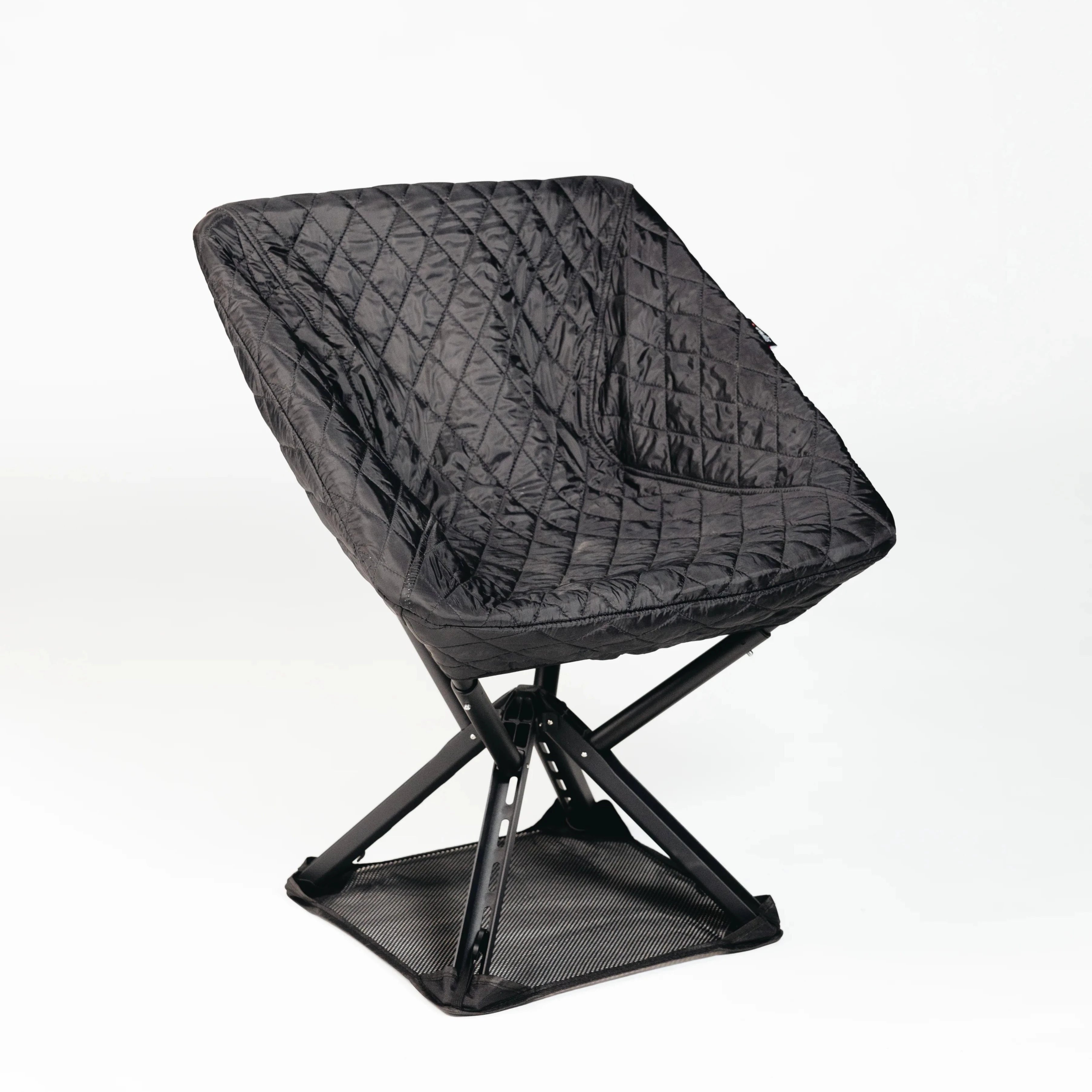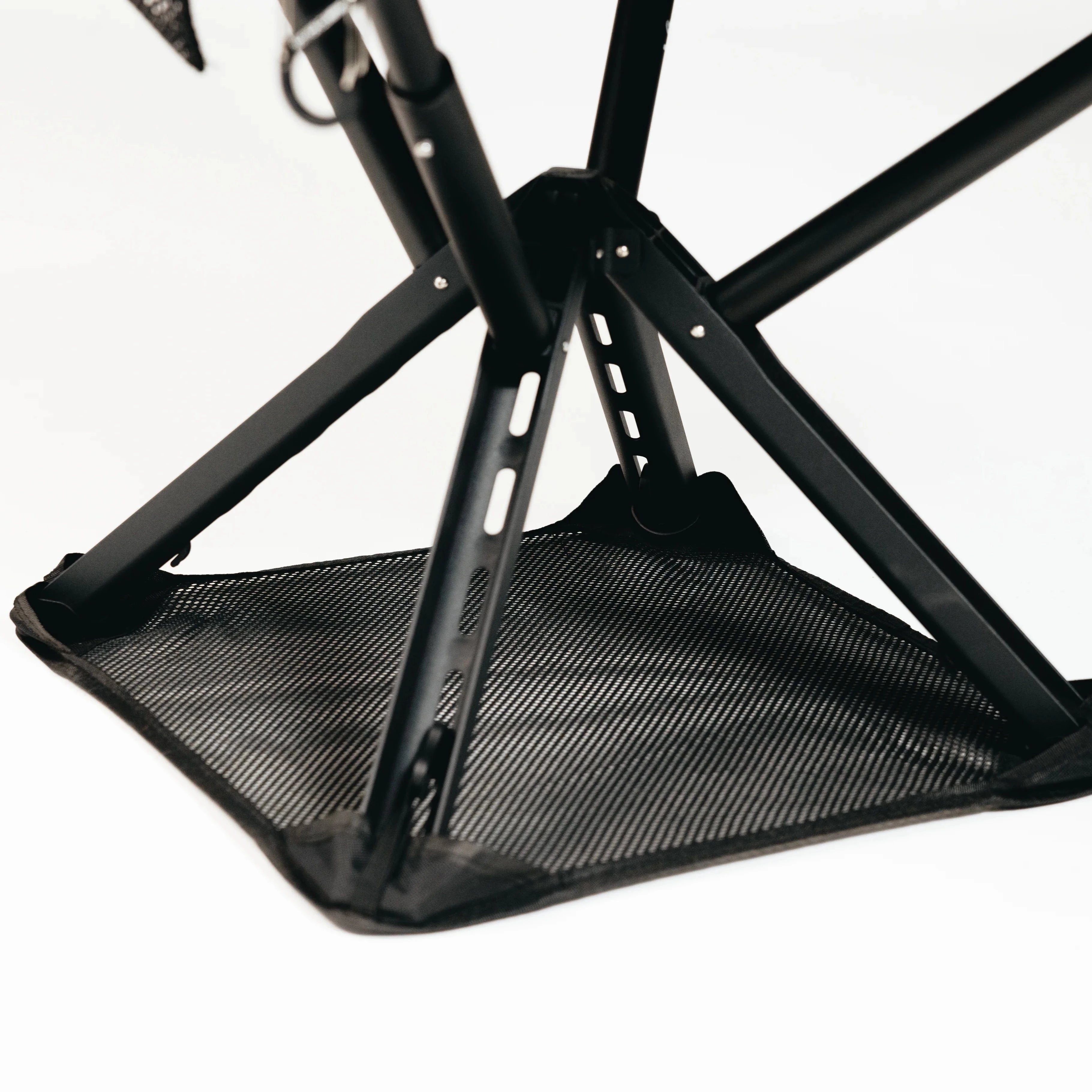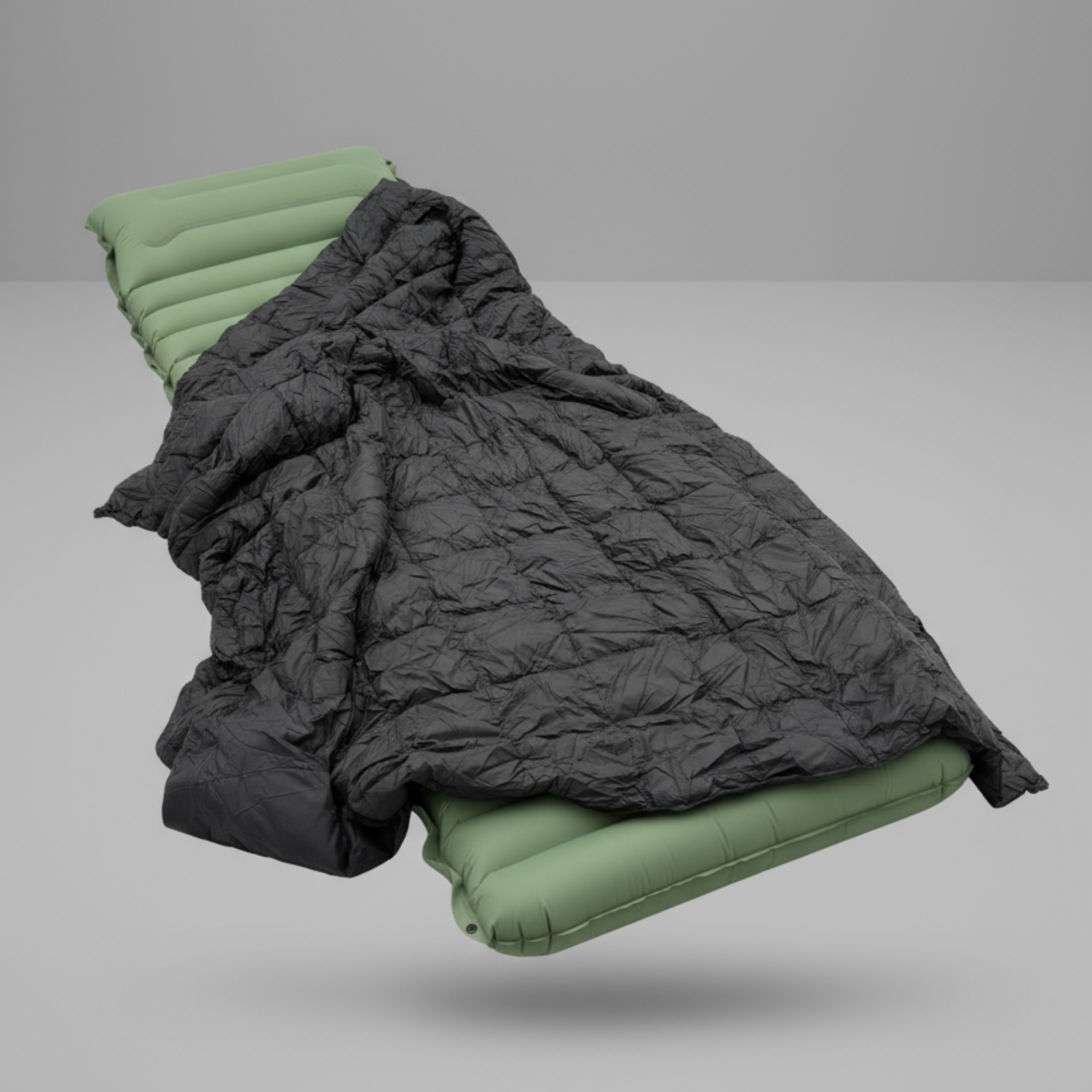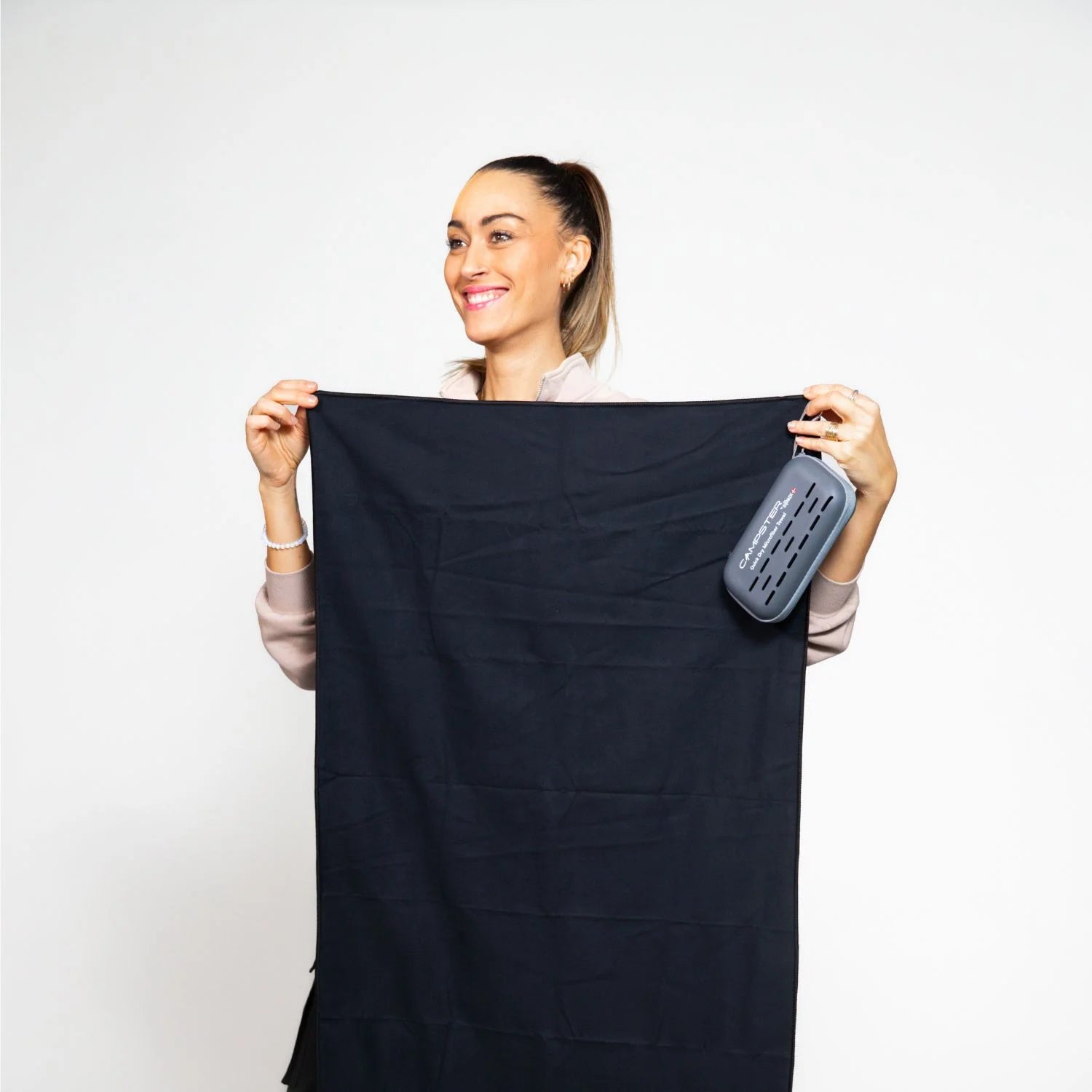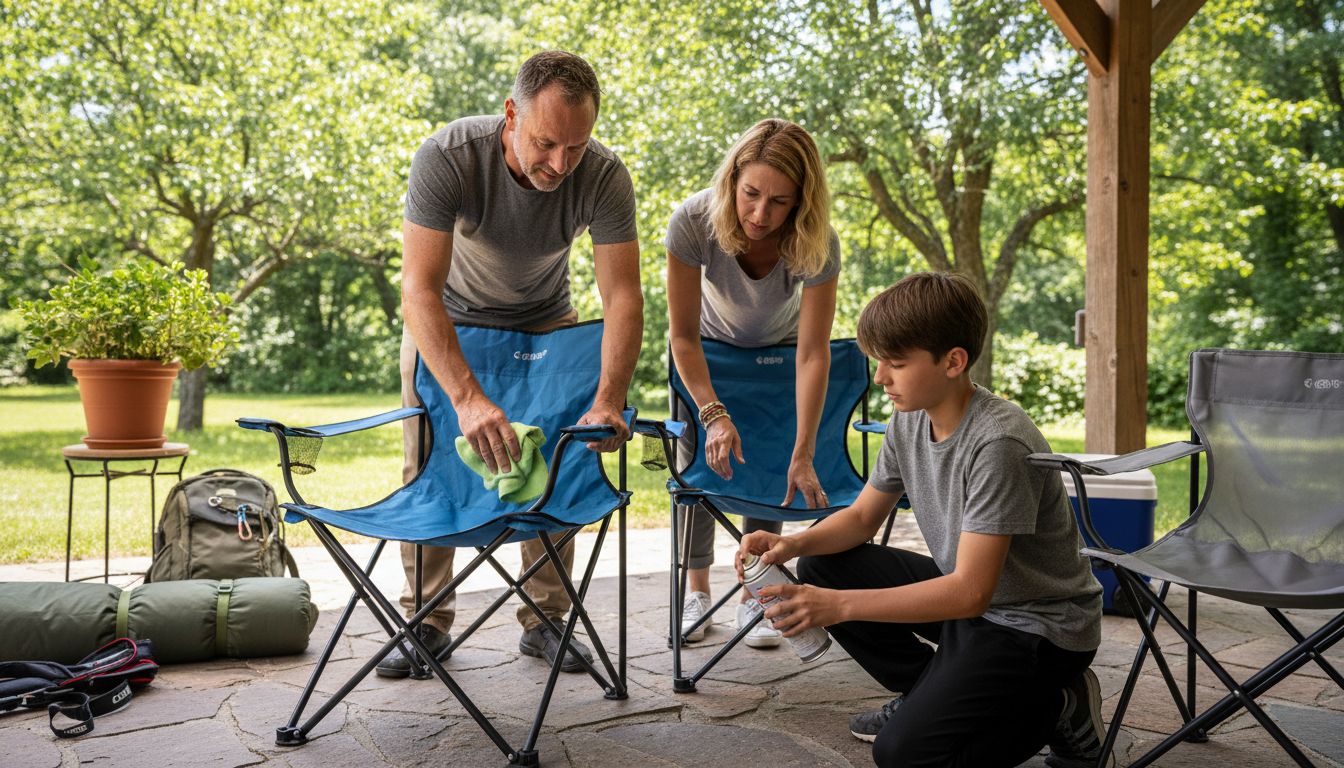Even the sturdiest american foldable chairs can lose their comfort and safety if not cared for properly. Busy lives and outdoor adventures often lead people to overlook simple maintenance steps, putting favorite chairs at risk of damage or wear. With nearly 30 percent of outdoor seating replaced each year due to preventable issues, learning how to maintain your chair can save both money and hassle. This step by step guide will help you protect your investment so every outing includes reliable comfortable seating.
Table of Contents
- Step 1: Prepare Your Foldable Chair for Maintenance
- Step 2: Clean Surfaces and Remove Debris
- Step 3: Inspect Parts for Damage or Wear
- Step 4: Lubricate Joints and Moving Mechanisms
- Step 5: Store and Transport Your Chair Safely
Quick Summary
| Key Insight | Explanation |
|---|---|
| 1. Thoroughly Clean Your Chair | Begin chair maintenance by removing dust and debris using a soft cloth for optimal care. |
| 2. Inspect for Damage Regularly | Check hinges and joints for signs of wear to ensure safety and prolong chair life. |
| 3. Properly Lubricate Moving Parts | Use silicone spray to grease joints, preventing friction and enhancing functionality. |
| 4. Store Safely to Protect | Keep your chair in a dry, cool place, ideally indoors, to prevent damage and degradation. |
| 5. Test Cleaning Solutions First | Always test cleaning products on hidden areas to avoid unwanted discoloration or damage. |
![]() |
|
Step 1: Prepare Your Foldable Chair for Maintenance
Preparing your foldable chair for maintenance is a crucial first step in preserving its durability and performance. This initial process ensures you remove accumulated dirt, inspect potential wear areas, and create an optimal environment for thorough care and cleaning.
According to fold-chair, the foundation of chair maintenance begins with a clean surface. Start by removing your chair from storage and giving it a comprehensive once over with a soft, dry cloth to eliminate dust and loose debris. Pay special attention to joints, hinges, and fabric areas where dirt tends to accumulate. This initial dusting prevents potential finish damage and provides a clear view of any areas needing extra care.
For chairs made of different materials, adapt your preparation approach. Plastic chairs require a slightly different method. As prestige-affairs recommends, use a mild detergent and water solution to clean surfaces thoroughly. Gently wipe down every surface, ensuring you remove grime without using abrasive materials that might scratch or damage the chair.
A pro tip from seasoned outdoor enthusiasts: always work in a well ventilated area with good lighting. This helps you spot subtle imperfections or wear points that might need special attention during your maintenance routine. By taking time to prepare carefully, you set yourself up for a successful chair restoration process that will extend your favorite outdoor seating companion’s lifespan.
Step 2: Clean Surfaces and Remove Debris
Cleaning your foldable chair thoroughly is essential for maintaining its appearance, preventing material degradation, and ensuring optimal performance during outdoor adventures. This crucial maintenance step removes dirt, grime, and potential contaminants that could compromise your chair’s durability.
For fabric chairs, oneabove provides an excellent cleaning approach. Mix a mild detergent with warm water to create a gentle cleaning solution. Using a soft cloth or soft bristled brush, gently scrub the fabric surfaces in circular motions. Pay special attention to stained or heavily soiled areas, but avoid aggressive scrubbing that might damage the material. Once you have thoroughly cleaned the surface, rinse the fabric completely with clean water to remove all soap residue.
Drying is just as important as cleaning. After rinsing, place your chair in a well ventilated area away from direct sunlight. Air drying prevents potential moisture related issues like mold or mildew growth. If possible, prop the chair open to allow maximum airflow around and through the fabric. For non fabric surfaces like plastic or metal, use a microfiber cloth with your cleaning solution to prevent scratching and maintain the chair’s finish.
A pro tip from seasoned outdoor gear enthusiasts: always test your cleaning solution on a small hidden area first to ensure it doesn’t discolor or damage the material. This simple precaution can save you from potential repair or replacement costs. With careful cleaning, you are now ready to move on to the next stage of chair maintenance.
Step 3: Inspect Parts for Damage or Wear
Inspecting your foldable chair for potential damage is a critical step in ensuring its safety, reliability, and longevity. This careful examination helps you identify subtle wear and tear before it becomes a significant problem that could compromise your chair’s structural integrity or performance during outdoor activities.
According to assistivetechhub, you should focus your inspection on high stress areas like hinges, joints, and attachment points. Start by checking for loose screws or bolts that might have worked themselves free during previous uses. Run your fingers along the frame and fabric, feeling for any unusual bumps, tears, or irregularities. Pay special attention to rubber feet and connection points where metal components meet fabric or other materials.
For metal frame components, images recommends a thorough visual and tactile examination for signs of structural compromise. Look carefully for hairline cracks, significant bends, or areas of rust that might indicate potential failure. If you discover any structural damage that seems significant, discontinue using the chair immediately and consider professional repair or replacement.
A pro tip from seasoned outdoor gear experts: use good lighting and take your time during the inspection. Natural daylight helps reveal subtle imperfections that might be missed under artificial light.
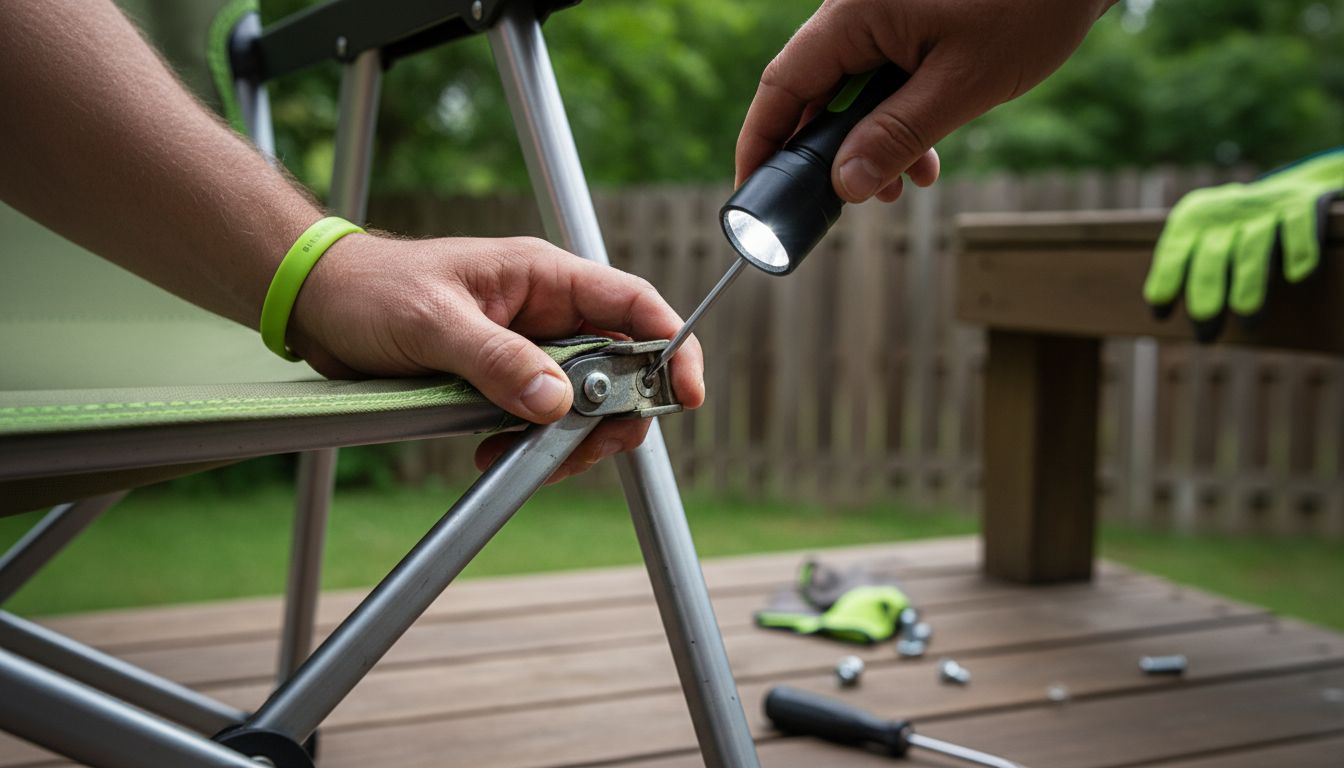 By methodically examining every component, you can catch potential issues early and extend your foldable chair’s usable life. With your detailed inspection complete, you are now prepared to address any maintenance needs and ensure your chair remains safe and reliable for your next outdoor adventure.
By methodically examining every component, you can catch potential issues early and extend your foldable chair’s usable life. With your detailed inspection complete, you are now prepared to address any maintenance needs and ensure your chair remains safe and reliable for your next outdoor adventure.
Step 4: Lubricate Joints and Moving Mechanisms
Lubricating your foldable chair’s joints and moving mechanisms is a critical maintenance step that ensures smooth operation, prevents unnecessary friction, and significantly extends the lifespan of your outdoor seating companion. This process reduces wear and tear while keeping your chair functioning like a well oiled machine during your adventures.
According to prestige-affairs, silicone spray is an excellent lubricant for chairs with hinges and foldable parts. Begin by thoroughly cleaning the joints and moving mechanisms to remove any accumulated dirt or debris. Apply a light and even coating of silicone spray directly onto the pivot points, hinges, and connection areas. Be sure to move the chair through its full range of motion after application to distribute the lubricant evenly and ensure complete coverage.
For chairs with different materials like metal or wood, choose a lubricant appropriate to the specific surface. Avoid over application, which can attract additional dirt and potentially damage the chair’s finish. Work the lubricant into the joints using a clean cloth, paying special attention to areas that experience frequent stress during folding and unfolding. Wipe away any excess product to prevent buildup.
A pro tip from seasoned outdoor gear experts: always test your lubricant on a small inconspicuous area first to ensure compatibility with your chair’s materials. Apply sparingly and consistently for optimal results.
With your chair now smoothly lubricated, you are ready to prepare it for storage or your next exciting outdoor expedition.
Step 5: Store and Transport Your Chair Safely
Proper storage and transportation are essential for preserving your foldable chair’s condition and extending its usable life. This final maintenance step ensures your chair remains protected from environmental damage and ready for your next outdoor adventure.
According to ihomerank, selecting the right storage environment is crucial. Choose a dry, cool area away from direct sunlight and extreme temperature fluctuations. Completely fold your chair before storage, ensuring all mechanisms are locked securely. If possible, store the chair indoors in a climate controlled space like a closet, garage, or storage room to prevent fabric degradation and potential moisture related issues.
As recommended by images, if outdoor storage is unavoidable, invest in a high quality chair cover that provides protection from rain, dust, and UV rays. When transporting your chair, use a protective bag or case if available, and avoid placing heavy items on top of it. Always lift the chair carefully by its frame, avoiding stress on fabric or folding mechanisms.
A pro tip from seasoned outdoor gear experts: before long term storage, perform a final inspection and cleaning to remove any dirt or moisture. Consider hanging the chair or storing it in a vertical position to minimize pressure on joints and fabric. By following these careful storage and transportation guidelines, you will help ensure your foldable chair remains in top condition for many adventures to come.
Protect Your Outdoor Comfort with Smart Seating Solutions
Maintaining your foldable chair can be a time consuming and delicate task. The challenge lies in keeping your chair clean, well lubricated, and safely stored to avoid damage that could cut your outdoor adventures short. You want reliable gear that handles wear and tear effortlessly while offering easy maintenance without constant worry.
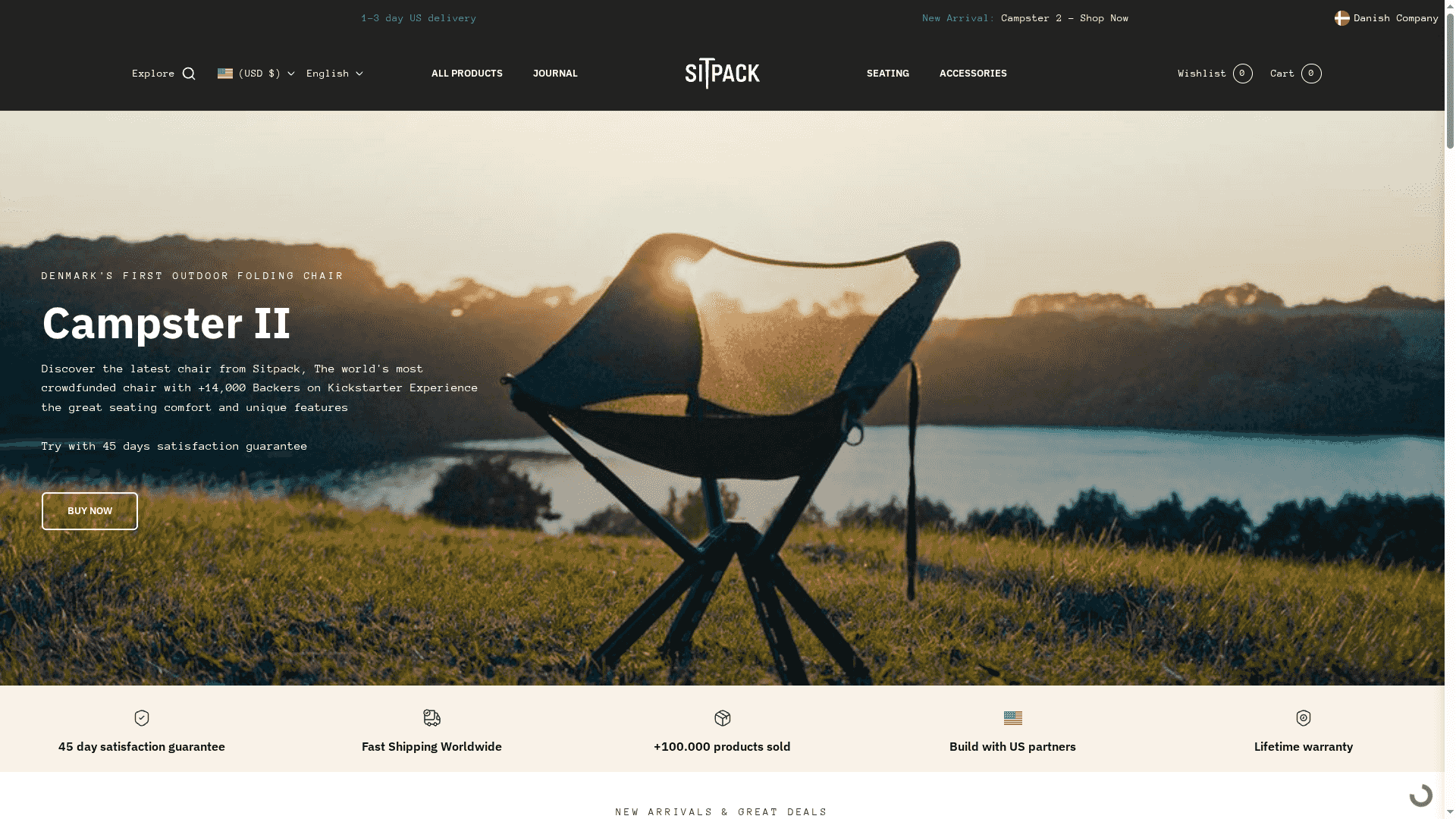
Discover the ease of owning ultra portable, durable seating at Sitpack. Our innovative foldable chairs like the Campster II and Sitpack Zen combine lightweight design with strong materials built to last through countless uses. With minimal upkeep needed, you spend less time on maintenance and more time enjoying your trips. Act now to upgrade your outdoor gear with solutions designed for comfort, convenience, and longevity. Visit Sitpack to explore new arrivals and accessories that protect your investment and enhance your adventures today.
Frequently Asked Questions
How do I prepare my foldable chair for maintenance?
Preparing your foldable chair starts with cleaning it to remove dust and debris. Use a soft, dry cloth to wipe down the chair and inspect joints, hinges, and fabric areas for dirt that needs attention.
What is the best way to clean fabric surfaces on my foldable chair?
To clean fabric surfaces, mix a mild detergent with warm water and scrub gently using a soft cloth or brush. Focus on stained areas while rinsing thoroughly to remove soap residue and ensure proper drying in a well-ventilated area away from direct sunlight.
How can I inspect my foldable chair for wear and damage?
Inspect your foldable chair by examining high-stress areas like hinges and joints for loose screws, cracks, or rust. Use good lighting and a careful touch to feel for any irregularities, allowing you to catch potential issues before they worsen.
What type of lubricant should I use on my chair’s joints and moving parts?
Use silicone spray as a lubricant for hinges and foldable parts, ensuring the chair’s joints are clean before application. Apply a light and even coat, then work the lubricant into the joints to minimize friction and extend the chair’s lifespan.
How should I store and transport my foldable chair to maintain its condition?
Store your foldable chair in a dry, cool area away from direct sunlight, and fully fold it before placing it in a protective bag if transporting. Regularly check the chair before long-term storage to clean and inspect for any moisture or damage to ensure its durability during outings.
